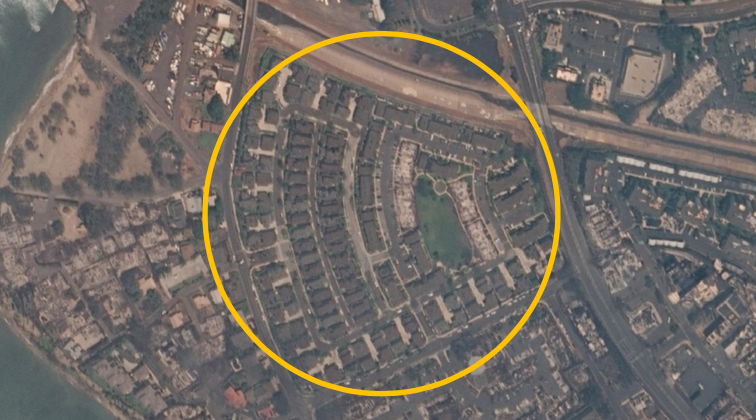IBHS (Insurance Institute for Business and Home Safety) just released a report covering early insights from the Lahaina Fire.
Keep reading for an excerpt of that report and download the full report below.
“Why It Matters: The August 9th Lahaina Fire on the island of Maui is the most recent example of a wildfire that transitioned to a nearby community with catastrophic and deadly results.
Dig Deeper: Like the 2021 Marshall Fire, high winds drove the fire, which entered the community of Lahaina through adjoining grasslands. It spread quickly once the built environment was ignited, and the resulting conflagration overwhelmed first-response resources. Limited evacuation routes contributed to more than 100 known fatalities, making this fire more deadly than the 2018 Camp Fire, and potentially the largest loss of life from a wildfire in over 100 years.
It’s Not Just One Thing: A notable exception to the widespread destruction is the survival of a development built in 2019–2020 with a mix of single-family homes and a cluster of multifamily units in its interior. Within this development, no single-family structures were lost. Although several multifamily structures in the interior ignited (probably from embers), there was no structure-to-structure conflagration in this area. Despite close spacing, this area was spared in part because of:
- Class A roof covers, specifically asphalt shingles and metal.
- Non-combustible exterior wall materials.
- High-wind rated off-ridge attic vents, which have been shown by IBHS to also be effective at reducing ember entry.
- Due to the newness of the developed area, landscape vegetation did not cover as much area, providing less connective fuel between structures. Real-World Impact: Modern building codes and community plans that consider wildfire along with programs like IBHS’s Wildfire Prepared HomeTM designation can reduce the losses and displacement caused by conflagration-level events such as the Lahaina Fire. Hawaii’s modern building code has high-wind requirements that introduced elements that helped newer construction resist wildfire conditions.”








